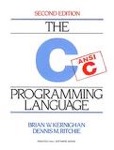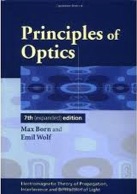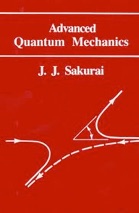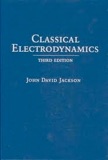





PH101: Physics 1
[July - November (2011,2009, 2008,2007) Semester]
Classical Mechanics: Position, velocity and acceleration vectors in plane polar coordinate. Newton's laws of motion. Fundamental forces. Contact forces. System of Particles. Conservation of momentum. Work-energy theorem. Line integral of a vector field. Conservative forces. Gradient of a scalar field. Potential energy and equilibrium. Conservation of energy. Angular momentum. Rotation about fixed axis. Torque. Motion involving translation and rotation. Vector nature of angular velocity and angular momentum. The Gyroscope. Pseudo forces. Rotating frame. Centrifugal and Coriolis forces. Foucault pendulum. Special Theory of Relativity: Result of Michelson~Mor1ey Experiment. Postulates of STR. Galilean transformation. Lorentz transformation. Simultaneity. Length Contraction. Time dilation. Relativistic addition of velocities.
Quantum Mechanics: Failure of classical concepts. De Broglie's hypothesis. Davison and Germer's experiment. Uncertainty Principle, Wave packets. Phase and Group velocities. Schrodinger Equation. Probabilities and Normalization. Expectation values. Eigenvalues and eigenfunctions. Applications in one dimension: Particle in a box, Finite Potential well, Steps and Barriers, Harmonic oscillator.
Texts:
1. D. Kleppner and R. J. Kolenkow, An Introduction to Mechanics, Tata McGraw-Hill (2000) .
2. K. Krane, Modern Physics, John Wiley, Singapore, (1998).
References:
-
1.R. P. Feynman, R. B. Leighton, and M. Sands, The Feynman Lectures on Physics,
VoU, Norosa Publishing House (1998).
2. J.M. Knudsen and P.G. Hjorth, Elements of Newtonian Mechanics, Springer (1995).
3. R. Resnick, Introduction to Special Relativity, John Wiley, Singapore, (2000).
4. A. Beiser, Concepts of Modern Physics, Tata McGraw-Hill, New Delhi, (1995).
PH102: Physics II
[January - May (2017,2016,2015(s),2013(s),2010(s), 2010, 2009, 2008 Semester]
Vector Calculus: Gradient, Divergence and Curl, Line, Surface, and Volume integrals, Gauss's divergence theorem and Stokes' theorem in Cartesian, Spherical polar, and Cylindrical polar coordinates, Dirac Delta function. Electrostatics: Gauss's law and its applications, Divergence and Curl of Electrostatic fields, Electrostatic Potential, Boundary conditions, Work and Energy, Conductors, Capacitors, Laplace's equation, Method of images, Boundary value problems in Cartesian Coordinate Systems, Dielectrics, Polarization, Bound Charges, Electric displacement, Boundary conditions in dielectrics, Energy in dielectrics, Forces on dielectrics. Magnetostatics: Lorentz force, Biot-Savart and Ampere's laws and their applications, Divergence and Curl of Magnetostatic fields, Magnetic vector Potential, Force and torque on a magnetic dipole, Magnetic materials, Magnetization, Bound currents, Boundary conditions. Electrodynamics: Ohm's law, Motional EMF, Faraday's law, Lenz's law, Self and Mutual inductance, Energy stored in magnetic field, Maxwell's equations, Continuity Equation, Poynting Theorem, Wave solution of Maxwell Equations. Electromagnetic waves: Polarization, reflection & transmission at oblique incidences.
Texts:
-
1.D. J. Griffiths, Introduction to Electrodynamics, Prentice-Hall (1995).
-
2.A.K.Ghatak, Optics, Tata Mcgraw Hill (2007).
References:
-
1.Nathan Ida, Engineering Electromagnetics, Springer, 2005.
-
2.M. N. O. Sadiku, Elements of Electromagnetics, Oxford (2006).
-
3.R. P. Feynman, R. B. Leighton, and M. Sands, The Feynman Lectures on Physics,
Vol. II, Norosa Publishing House (1998).
-
4.I. S. Grant and W. R. Phillips, Electromagnetism, John Wiley, (1990).


PH110: Physics Laboratory
[January - May (2009), July-November(2013), Jan-May(2014) Semester]
Typical Experiments: Rotational inertia of a rigid body, Small oscillation, Black body radiation: Stefan-Boltzmann law, Velocity of sound in air, Fraunhofer diffraction: single slit, multiple slits, Diffraction by plane grating, Interference of light: Newton's ring, Polarization of light, Decay of current in a RC circuit, LCR circuit: forced damped oscillation, Electrical properties of Materials, Hall effect, Magnetic field along the axis of a coils, Photovoltic effect: Solar Cell, etc.
References:
-
1.D. Halliday, R. Resnick and J. Walker, Fundamentals of Physics, John Wiley, Singapore
-
2.D. Kleppner and R. J. Kolenkow, An Introduction to Mechanics, Tata McGraw-Hill
-
3.D. J. Griffiths, Introduction to Electrodynamics, Prentice-Hall (1995).
-
4.F. A. Jenkins and H. E. White, Fundamental of Optics, McGraw-Hill, (1981).
-
5.S. M. Sze, Physsics of Semiconductor Devices, Wiley Eastern (1981).
PH308: Numerical Methods and Computational Physics
[January - May (2011) Semester]
Error: Its sorces, propagation and analysis, computer representation of numbers. Root of Nonlinear Equations: Bisection, Newton-Raphson, Secant Method. System of Nonlinear equations, Newton's method for Nonlinear Systems. Applications in Physics problems. Solution of linear systems: Gauss, Gauss-Jordan elimination, Matrix inversion and LU decomposition. Eigenvalues and Eigen vectors, Applications. Interpolation and Curve fitting: Introduction to interpolation, Lagrange approximation, Newton and Chebyshes polynomials. Least square fitting, linear and nonlinear. Application in Physics problems. Numerical differentiation and integration: Approximating derivative, numerical differentiation formulas, introduction to quadrature, trapezoidal and Simpson's rule. Gauss-Legendre integration and applications. Solution of ODE: Initial value and boundary value problems, Euler's and Runge-Kutta Methods. Finite difference method. Applications in Chaotic dynamics, Schrodinger's equations. Solution of PDE: Hyperbolic, parabolic and Elliptic Equations by finite difference Application to two dimensional Electrostatic Field problems.
Texts:
-
1.K. E. Atkinson, Numerical Analysis, John Wiley(Asia) (2004).
-
2.S. C. Chapra and R. P. Canale, Numerical Methods for Engineers, Tata McGraw Hill (2002)
References:
-
1.J. H. Mathews, Numerical Methods for Mathematics, Science, and Engineering,
Prentice Hall of India (1998).
-
2.S. S. M. Wong, Computational Methods in Physics, World Scientific (1992).
-
3.W. H. Press, S. A. Teukolsky, W. T. Verlling and B. P. Flannery,
Numerical Recipes in C, Cambridge (1998).
PH407: Computer Programming
[July - November (2008, 2007)Semester]
Introduction to personal computers and operating systems (DOS/Windows and Linux), graphics packages. C programming Language: Algorithms, flow charts, constants, variables, expressions, conditional statements, loops, arrays, logical expressions, control statements, functions, structures, pointers, bit operation, files in C. Solving simple problem using C programming Language.
Texts:
1. V. Rajaraman, Computer Programming in C, Prentice-Hall (2000).
References:
-
1.M. M. Mano, Computer System Architecture, Prentice Hall (1993)
-
2.P. Norton, Complete Guide to Windows, Prentice Hall (1995).
-
3.K. Srirengan, Understanding Unix, Prentice Hall (1999).
-
4.B. W. Kernighan and D. M. Ritchie, The C Programming Language, Prentice Hall (2001)
PH408: Numerical Methods and Computational Physics
[January - May (2009, 2008) Semester
Error: Its sorces, propagation and analysis, computer representation of numbers. Root of Nonlinear Equations: Bisection, Newton-Raphson, Secant Method. System of Nonlinear equations, Newton's method for Nonlinear Systems. Applications in Physics problems. Solution of linear systems: Gauss, Gauss-Jordan elimination, Matrix inversion and LU decomposition. Eigenvalues and Eigen vectors, Applications. Interpolation and Curve fitting: Introduction to interpolation, Lagrange approximation, Newton and Chebyshes polynomials. Least square fitting, linear and nonlinear. Application in Physics problems. Numerical differentiation and integration: Approximating derivative, numerical differentiation formulas, introduction to quadrature, trapezoidal and Simpson's rule. Gauss-Legendre integration and applications. Solution of ODE: Initial value and boundary value problems, Euler's and Runge-Kutta Methods. Finite difference method. Applications in Chaotic dynamics, Schrodinger's equations. Solution of PDE: Hyperbolic, parabolic and Elliptic Equations by finite difference Application to two dimensional Electrostatic Field problems.
Texts:
-
1.K. E. Atkinson, Numerical Analysis, John Wiley(Asia) (2004).
-
2.S. C. Chapra and R. P. Canale, Numerical Methods for Engineers, Tata McGraw Hill (2002)
References:
-
1.J. H. Mathews, Numerical Methods for Mathematics, Science, and Engineering,
Prentice Hall of India (1998).
-
2.S. S. M. Wong, Computational Methods in Physics, World Scientific (1992).
-
3.W. H. Press, S. A. Teukolsky, W. T. Verlling and B. P. Flannery,
Numerical Recipes in C, Cambridge (1998).

PH501: Electrodynamics II
[July - November (2009) Semester]
Electromagntic Waves in Conducting medium: Reflection and transmission, frequency dependence of permittivity, permeability and conductivity, electrons in conductors and plasma. Wave Guides: Waves between parallel conductors, TE and TM waves, Rectangular and Cylindrical wave guides. Radiations: Moving Charges, Lienard- Wiechert potential, accelerated charges, angular distribution of radiations, distribution of frequency and energy, Thomson's scattering, Bremsstrahlung in Coulomb collisions. Radiating Systems and Multipole fields: Electric dipole fields and radiations, quadrupole fields, multipole expansion, Energy, angular momentum, multipole radiations. Scattering and Diffraction: Scattering at long wavelengths, perturbation theory, Rayleigh scattering, diffraction theory-Kirchhoff's integral and applications. Special Theory of Relativity: Lorentz Transformations and it's consequences, conservation laws, mass energy relation, relativistic momentum and energy, relativistic force. Relativistic Electrodynamics: Covariant formalism of Maxwell's equations, Transformation laws and their physical significance, relativistic generalization of Larmor's formula, Relativistic formulation of radiation by single moving charge.
Texts:
-
1.J. D. Jackson, Classical Electrodynamics, John Wiley (Asia) (1999).
-
2.R. Resnick, Introduction to Special Relativity John Wiley (Asia) (1999).
References:
-
1.E. C. Jordan and K. G. Balmain, Electromagnetic Waves and Radiating Systems,
Prentice Hall (1995).
-
2.J. Schwinger et al., Classical Electrodynamics, Persesus Books (1998).
-
3.G. S. Smith, Clasical Electromagnetic Radiation, Cambridge (1997).




PH 701 Classical Mechanics
(July - November (2011,2012) Semester)
Review of point-particle mechanics, Lagrangian mechanics of point particles and rigid bodies, Legendre transformations, Hamiltonian description, conservation laws, Poisson brackets, perturbation theory in classical mechanics. Classical theory of real and complex scalar fields. Noether’s theorem. Symmetries and conserved currents. Lagrangian description of classical fluids. Navier Stokes Equation. Energy momentum tensor. Hamiltonian and Lagrangian description of the electromagnetic field. Gauge invariance. Lagrangian description of general relativity.
Texts/References
-
1.Classical Mechanics (3rd Edition) by Herbert Goldstein, Charles P. Poole, and John L. Safko, Addison Wesley Longman (2001).
-
2.Course of Theoretical Physics : Mechanics(Paperback) by L. D. Landau, Butterworth- Heinemann (2003).
-
3.Course of Theoretical Physics : The Classical Theory of Fields(Paperback), Vol.2, 4th Edn. by L. D. Landau and E.M. Lifshitz, Butterworth-Heinemann (2000).
-
4.Course of Theoretical Physics : Fluid Mechanics(Paperback), vol.6, 2nd Edn. by L. D. Landau and E.M. Lifshitz, Butterworth-Heinemann (2000).
Tutorials

PH 282M Engineering Optics
(Jan - May (2013) Semester)
Fermat’s principle, laws of reflection and refraction from Fermat’s principle; Electromagnetic waves at the interface of two dielectrics; Reflection and refraction by a single spherical surface, thin lens; Chromatic and monochromatic aberrations; Hygen’s principle and its applications; Interference by divison of wave front and amplitude, Thin film interference and related applications; Multiple beam interferometry; Coherence; Fraunhofer and Fresnel diffraction, diffraction grating, Zone plate; Polarization and double reflection, optical activity; Fibre Optics: basic characteristics of a step index optical fibre, attenuation and dispersion in optical fibres, principles of a fibre optic communication system; Holography: basic principles and applications; Nonlinear Optics: Nonlinear optical susceptibilities, second harmonic generation, self-focussing phenomenon. Optical Instruments: various kinds of optical microscopes, telescopes, binoculars, spectrometer; Cameras, Zoom lenses.
Texts:
1. A. Ghatak, Optics, 4thEd., Tata McGraw Hill, 2009.
2. E. Hecht, Optics, 4th Ed., Pearson Education, 2002.
References:
-
1. F. Pedrotti, L. Pedrotti and L. Pedrotti, Introduction to Optics,
Benjamin Cummings, 3rdEd., 2007.
-
2. R. D. Guenther, Modern Optics, Wiley&Sons, 1990.
-
3. M. Born and E. Wolf, Principles of Optics, 7th Ed.,
Cambridge University Press, 2005.

PH703: Quantum Mechanics
[Aug - Nov (2013), Jan-April(2014) Semester]
Solution of Schrodinger equation for potential problems: free particle in a spherical cavity, delta potential, tunnelling through a barrier, harmonic oscillator, charged particle in a uniform magnetic field; Ahranov–Bohm Effect; Orbital and spin angular momentum, addition of angular momenta, Clebsch-Gordon coefficients, Hydrogen atom, applications of time independent and dependent perturbation theory, scattering theory, Born approximation, Klein-Gordon and Dirac equations.
Texts/References:
-
1.F. Scheck, Quantum Physics, Springer (2009).
-
2.V.B. Berestetskii, E.M. Lifshitz, L. P. Pitaevskii, Quantum Electrodynamics, 2nd Edition, Elsevier Butterworth Heinemann (2008).
-
3.L. D. Landau and E. M. Lifshitz, Quantum Mechanics, Third Edition, Elsevier Butterworth Heinemann (2005).
-
4.D. J. Griffiths, Introduction to Quantum Mechanics, Pearson Education (2005).
-
5.K. Gottfried and T-M Yan, Quantum Mechanics: Fundamentals,2nd Ed., Springer (2003).
-
6.J. J. Sakurai, Modern Quantum Mechanics, Pearson Education (2002).
-
7.J. J. Sakurai, Advanced Quantum Mechanics, Pearson Education (2002).
-
8.W. Greiner, Quantum mechanics: Special chapters, Springer (1997).
-
9.R. Shankar, Principles of Quantum Mechanics, Springer; 2nd edition (1994).

PH702: Electrodynamics
[July- Nov (2014), Jan-May(2015), July-Nov(2015)Semester]
Maxwell’s equations, Green function formalism and boundary value problems in electrostatics and magnetostatics, Poynting’s theorem and Gauge transformations, Electromagnetic waves in dielectric and conducting media; Waveguide and resonant cavity; Radiation: Retarded potential, Field and radiation of a localized Oscillating source, Electric dipole radiation, Center-fed linear antenna, Lienard-Wiechert potential, radiation by nonrelativistic and relativistic charges, angular distribution of radiation; Scattering: scattering at long wavelengths, Thomson and Rayleigh scattering, Born approximation; Relativistic electrodynamics: covariant formalism of Maxwell’s equations.
Course materials are available in Moodle
Texts/References:
-
1.J. D. Jackson, Classical Electrodynamics, John Wiley (1999).
-
2. L. D. Landau and E. M. Lifshitz, Electrodynamics of Continuous Media, Butterworth (1995).
-
3.H. J. W. Muller Kirsten, Electrodynamics, World Scientific (2011).
-
4.G. S. Smith, Classical Electromagnetic Radiation, Cambridge (1997).

PH411: Electronics Lab
(July - November (2015, 2016) Semester)
Typical experiments: Half-wave and full-wave rectifiers; voltage regulation using Zener diode and IC 78xx; Regulated dual voltage power supply using IC 78xx and IC79xx; I/O characteristics of BJT in CB and CE configuration; Single stage amplifier using a FET; OP-AMP Circuits: Summer, subtractor, differentiator, integrator and active filters; Colpitts and Wien bridge oscillators; monostable and astable multivibrator using NE555; Universality of NOR/NAND gates; Verification of De Morgan's theorem, half-adder, full adder, multiplexers and demultiplexers; comparators; JK flip-flop, mod-counters; assembly language programming exercises with INTEL 8085 microprocessor kit; Simple interfacing experiments with 8155/8255.
References:
1. P. B. Zbar and A. P. Malvino, Basic Electronics: a text-lab manual, Tata McGraw Hill (1983).
2. D. P. Leach, Experiments in Digital Principles, McGraw Hill (1986).
3. R. S. Gaonkar, Microprocessor Architecture: Programming and Applications with the 8085, Penram India (1999).

